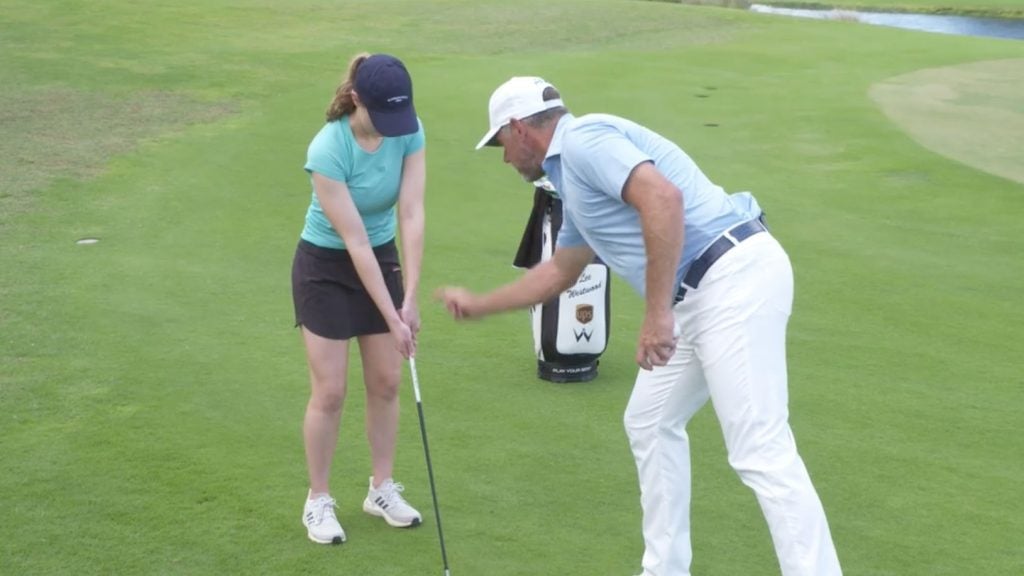The thing about not being a pro golfer and working for a golf media company is that eventually, despite any insecurities about your game, you’re going to have to play on camera.
Well, my game is filled with insecurities. I’m no beginner — I grew up playing junior golf, competed on my high school team and have avidly followed the game ever since. But I should play more than I do and I should definitely practice more than I do. Like plenty of golfers, life gets in the way.
On the bright side, that lack of polish made me a perfect candidate for a Pros Teaching Joes segment. What’s more relatable than a rusty short game? My chance came at our Lee Westwood cover shoot last month. In theory, getting a lesson from one of the best golfers in the world — at work, no less! — is a dream come true. In reality, that dream comes with a lot of nerves.
My time in the spotlight came at the end of a day spent with Westwood and his caddie and fiancée, Helen Storey. We headed over to a practice green at Old Palm Golf Club and as I was being mic’d up and looking over at the cameras, it hit me that I might be in over my head. In my life, I’ve played basically zero golf on grainy Bermudagrass, but the point of our lesson was to simplify tricky greenside chips.
There’s a delicate balance when it comes to being an average-to-below-average golfer and getting tips from a PGA Tour veteran. I definitely wasn’t going to impress Westwood, but I also didn’t want to completely embarrass myself. Plus, if it was going to be a good video, I’d need to actually succeed. Pressure on!
Due to a lethal combination of both rust and nerves, my first few putts didn’t get close to the pin. But they did allow me to loosen up and relax a bit. From there, I was able to get some valuable tips from Lee. Here’s what I learned:
1. Don’t be a hero.
It’s better to be safe than sorry, and your worst putt is going to be much better than your worst chip, especially if you’re dealing with Bermuda grass for the first time. It takes the possibilities of a big miss (a chunked wedge that doesn’t even make the green or a skulled wedge that soars over the green) out of play. You’re not expected to hole it with a putter or even leave yourself a tap-in. But if you can get within eight feet of the hole, you’ll have given yourself a good chance to get up-and-down.
2. Turn those shoulders!
If you’re like me, you might end up relying on your wrists to get the power you need for a long putt. Bermuda can be bumpy, which means I needed to generate a little extra power with a proper shoulder turn. And stay nice and loose! Let the putter release through impact with the loft it was designed with.
3. Switch things up.
Westwood encouraged me to experiment with another club besides putter. Pulling out a 3 or 5-wood will give you more power and loft, which means you’ll have some help getting it through the fairway and fringe more easily. Choke up, get your right hand all the way to the edge of the grip and hold the club upright. Keep your left arm and the shaft in line and fire away!
The rest of my game? It’s still a work in progress. But now I’ve got some extra motivation to practice so the next time the red light comes on I can get one even closer.
